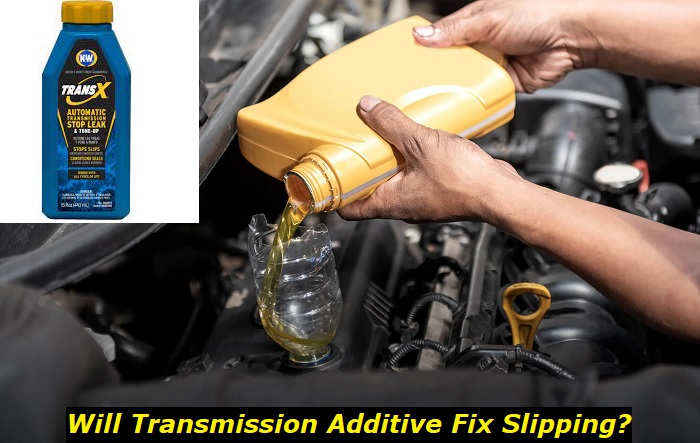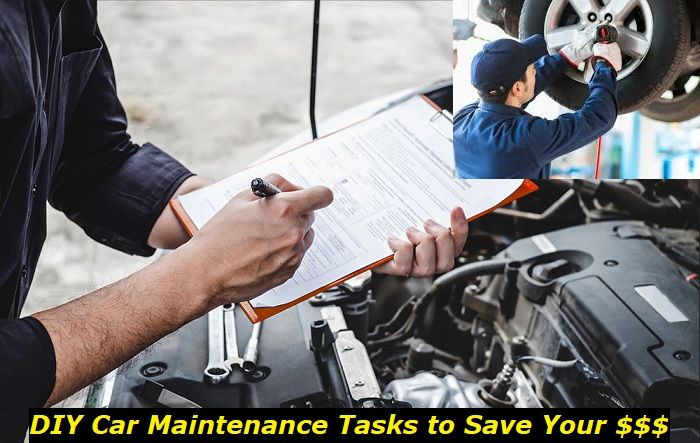If you're dealing with your transmission slipping, you might be desperate to find a cheap solution to avoid a steep transmission repair bill. You might have come across additives that promise to fix the slip in your transmission. They might even claim to repair the damage like magic, and leave your transmission good as new. Will these transmission additives actually work?
The simple answer is no. Transmission slipping is caused by damaged or worn surfaces that can't be repaired by additives. While some additives may provide some temporary benefits, most won't work at all, and some will even cause further damage to your transmission.
Transmission fluid additives highlights
- Level of importance:Low
- Time interval:no intervals
- Needed expertise:basic
- Needed tools:Basic set of car maintenance tools
- Time taken:0.5-1 hours
- Possible issues:Change of fluid properties, fatal transmission failure, limp mode, extensive transmission wear.

What Do Transmission Additives Claim to Do?
There are many different types of fluid additives that make different claims. Some of them claim to restore deteriorated transmission fluid, improve the fluid's heat resistance, or to fix worn seals and transmission leaks.
Many drivers find themselves drawn to using transmission additives because they are cheaper and faster than flushing the transmission fluid or going for a transmission repair. But do these additives actually do what they claim to?
Do Transmission Additives Work?
Unfortunately, transmission additives don't work to prevent slipping. By the time slipping is occurring, physical and mechanical damage has already been done to your engine components.
While there are some additives that actually work to provide a slight increase in friction in your transmission fluid, this improvement is often brief. These additives can't compensate for the damaged surfaces in the system.
While some additives provide temporary benefits, others provide no benefit at all. Some additives even cause damage to your transmission.
What Transmission Additives Do to Your Car
Many manufacturers warn against using additives in their transmissions, and for good reason. The fluid used in your transmission is specially formulated to provide the necessary properties needed to keep your transmission in good working order. Adding transmission additives can disrupt the properties of the fluid, reducing performance or even harming the transmission.
Some transmission additives, such as the ones marketed to fix leaks and repair seals, contain chemicals that cause the seals to swell and expand. This supposedly tightens the seals and plugs leaks, but in reality, it weakens the seals and causes them to break easily.
Transmission additives will also damage the friction lining material on clutch plates and transmission bands, resulting in further damage and degrading of the transmission system. Ironically, this will worsen the slippage problem in the long term.
Using transmission additives to address transmission slippage is a detrimental practice because it causes car owners to ignore the problem with their cars. This results in the issue worsening with time.
What is Transmission Slipping?
Transmission slipping means that your car doesn't stay in the gear that you place it in, or it moves into a new gear without your input. That is, the transmission slips out of the correct gear into a new one.
Both manual and automatic transmissions can experience transmission slipping. In the case of automatic transmissions, the car will slip into a gear that doesn't match its current speed.
This condition makes driving difficult, and can even make driving dangerous if the car shifts into the wrong gear at high speeds.
To protect yourself and others on the road, it's important to find a lasting solution to your slippage problem.
How to Fix Transmission Slipping
Transmission slipping is a problem that can make your car difficult or even dangerous to drive. Understandably, many car owners will try to find any way they can to avoid having to do expensive repairs, but it's not worth spending money on additives that might not work. Or worse, spending money on additives that degrade your transmission.
Instead of spending money on harmful transmission additives, you should direct that money toward addressing the cause of the problem. You might need to have your transmission repaired, but in some cases, you might be lucky and simply need a fluid flush.
Here are some effective ways to fix your slipping transmission without using transmission additives.
1) Check Fluid Level
One of the most common causes of transmission slipping is an inadequate level of transmission fluid. If the level of fluid in the transmission is too low, the system won't operate effectively. Along with slipping transmission, you might notice some other symptoms when your transmission fluid is low. These symptoms are:
- Strange noises
- A burning smell
- Transmission fluid leaks
- Hard shifting
- Slow acceleration
Any of these signs should direct you to make sure that your transmission fluid level is optimal.
If your transmission fluid is low, you should check for leaks before topping up the fluid. Transmission fluid leaks can result in low levels of transmission fluid and will cause quick wastage of fluid after topping up.
2) Check for Transmission Leaks
Leaking transmission is a major cause of low transmission fluid levels. If you're planning to top up your fluid to fix your transmission slipping problem, you'll need to make sure the system isn't leaking first.
To check for transmission leaks, you can check the following parts of the car.
- Check the transmission's seals. The seals are made of either rubber or steel, and they can deteriorate with heat and the movement of the car. Check for cracks, crumbling seals, and signs of leaking fluid.
- Check the housing of the transmission. The transmission housing is built to be strong and withstand impact, but it can eventually fail and crack. These cracks can allow transmission fluid to look out. Check the body of the transmission for cracks and leaking fluid.
- Check the transmission lines. The transmission fluid travels to different parts of the system through transmission lines. These lines are made from aluminum or steel. They are designed to be durable like the housing, but they can deteriorate from heat. Make sure to examine the lines for leaks.
- Check the ground under the car. While this isn't part of the car, leaking transmission fluid often puddles underneath the car where it can be seen easily.
If you find any transmission fluid leaks, the damaged part will need to be resealed or replaced.
Once you are certain that there are no leaks in your transmission system, you can go ahead to top up your transmission fluid.
3) Flush Deteriorated Fluid
The transmission fluid in your car doesn't last forever. As you drive, it starts to deteriorate from the friction and heat produced by the moving parts. Driving with dirty or broken-down transmission fluid can lead to a host of transmission issues. If the transmission fluid in your vehicle has deteriorated, you will need to drain it and replace it with new fluid.
Transmission slipping is one of the symptoms that your transmission fluid has gone bad. However, there are other symptoms to look out for as well.
- The transmission makes strange noises, such as grinding.
- Slow or hard shifting.
- Fresh transmission fluid should have a bright red color. Dirty or deteriorated transmission fluid has a dark color.
- The vehicle has jerky movement.
You can use the transmission dipstick to check the health of your transmission fluid. If the fluid is pink or red, then it is still ok. If it is dark or brown, it needs to be replaced.
4) Replace or Adjust Transmission Bands
Transmission bands are steel rings that use friction to stop the motion of elements of the gearset.
If the transmission bands in your car are worn or broken, they won't generate sufficient friction, causing slippage. This can also result in other problems like damaged gears.
Worn transmission bands need to be adjusted or replaced by a mechanic.
5) Replace Worn Clutch Plates
Whether your car uses manual or automatic transmission, your transmission will make use of clutch plates. Damaged or worn clutch plates will result in slippage.
If your slippage is occurring as a result of worn clutch plates, then you will need to replace the clutch plate assembly. This is a major repair and is accordingly expensive. Keep in mind that using transmission additives won't fix this problem, as the chemicals added to them can wear down clutch plates.
Conclusion
Many transmission additives promise magic solutions to transmission issues, but they are simply ineffective at fixing the problems they claim to solve. Transmission slipping is caused by low or dirty transmission fluid or physical damage to the transmission components. Transmission additives are incapable of repairing or fixing these problems.
Using transmission additives can worsen the state of the transmission. They cause further damage to the transmission, disrupt the properties of the transmission fluid, and weaken seals, clutch plates, and transmission bands.
The best course of action is to address the root cause of the slipping transmission instead of relying on harmful and ineffective additives. Topping up or replacing the fluid are two effective ways of dealing with transmission slippage. A more serious problem might require the replacement of the clutch plates or transmission bands.
About the authors
The CarAraC research team is composed of seasoned auto mechanics and automotive industry professionals, including individuals with advanced degrees and certifications in their field. Our team members boast prestigious credentials, reflecting their extensive knowledge and skills. These qualifications include: IMI: Institute of the Motor Industry, ASE-Certified Master Automobile Technicians; Coventry University, Graduate of MA in Automotive Journalism; Politecnico di Torino, Italy, MS Automotive Engineering; Ss. Cyril and Methodius University in Skopje, Mechanical University in Skopje; TOC Automotive College; DHA Suffa University, Department of Mechanical Engineering






Add comment